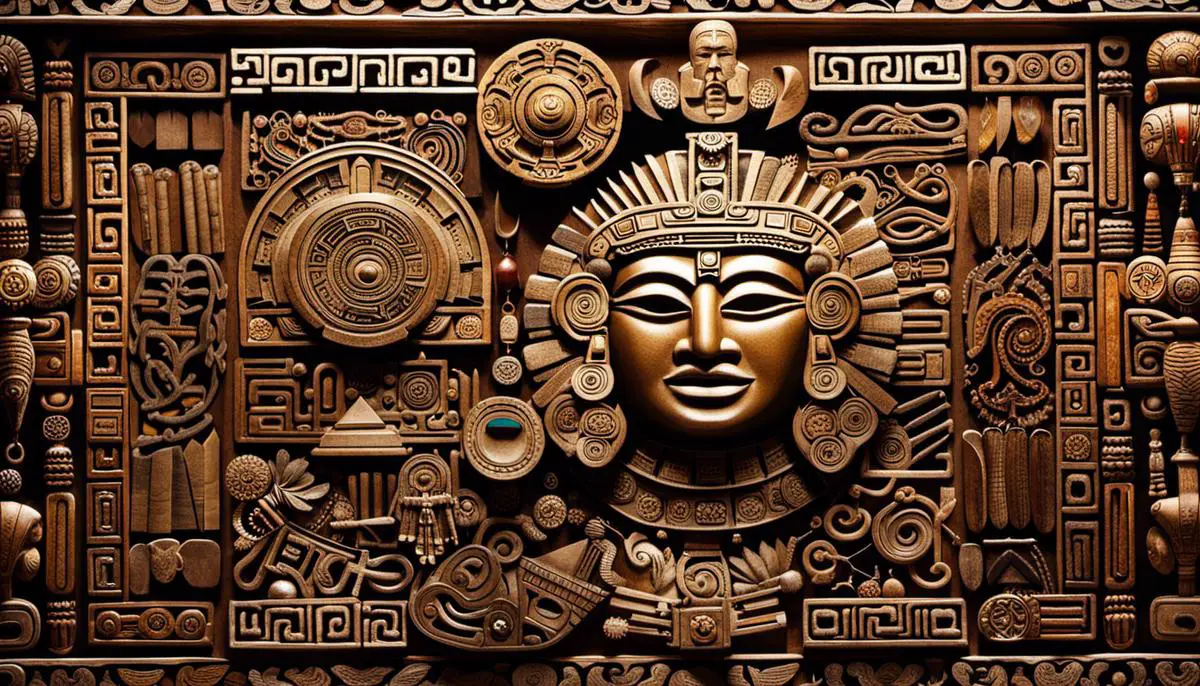The art of creating board games is an intricate process that reflects not just an understanding of game theory and design principles, but also a deep familiarity with the culture the game is based on. In this case, the vibrant and astounding world of the Aztecs, a civilization known for its complex social structures, artistry, and a remarkable penchant for games. Digesting the rich historical tapestry of the Aztec culture lends an authenticity to your DIY Aztec board game, exploring materials and techniques that resonate with their era, and learning game design principles to make the game as engaging and enjoyable as possible.
Understanding Aztec History and Culture
Understanding Aztec History
The Aztec civilization was one of the most remarkable in history, emerging as a dominant power in the 14th century in the Valley of Mexico. Famed for their elaborate culture, technological innovations, economic system, and intricate social structure, they represented a civilization ahead of its time. The history of Aztec Civilization is vast, found in many historical texts, artifacts, and via archaeological sites. Learn about their rise and fall, interaction with other civilizations, their language (Nahuatl), religion, and warfare. This historical familiarity will provide your game with a factually grounded background.
Appreciating Aztec Society
A hierarchical social structure was prevalent in Aztec society. The emperor was deemed the supreme leader. Nobles, warriors, and priests enjoyed a high status, while merchants, artisans, farmers, and servants comprised the low social strata. There was a significant emphasis on education, with separate schools for different social classes. Understanding the structure and intricacies of Aztec society allows you to create characters and roles within your game reflective of the Aztec social order.
Absorbing Aztec Culture
Aztec culture was rich and varied, distinctively marked by sacred traditions and rituals. They were known for their artwork – sculptures, pottery, and textiles were part of daily life. The Aztec calendar, which was both solar and ritual, was central to their religious events. Symbolism was heavily ingrained in their culture, present in their language, writing, art, and religious practices. Integrating elements of Aztec symbolism within your board game can significantly enhance its authentic feel.
Learning About Aztec Traditional Games
Traditional games were an integral part of Aztec society and usually had a meaning or purpose beyond mere entertainment. One such popular game was Ullamaliztli, a ball game with significant religious implications. Teams would attempt to bounce a rubber ball through stone hoops without the use of their hands. Another game was Patolli, a board game involving beans or small stones as markers, and dice made of pebbles. Understanding and incorporating traditional games can serve as the foundation or inspiration for your DIY Aztec board game.
Incorporating Aztec Symbols and Iconography
Just as important as understanding the history and culture of the Aztecs is understanding their symbolic language. The Aztecs used a complex system of pictographs and ideograms, rather than an alphabet, to communicate. Each symbol had a specific meaning, often associated with god, nature, or productive activities. Understanding these symbols allows you to integrate authentic and meaningful Aztec iconography into your game design.
Remember, immersing yourself in the Aztec world requires patience and research. The rich tapestry of this civilization’s history and culture will provide ample material to make your DIY Aztec board game as authentic and engaging as possible.
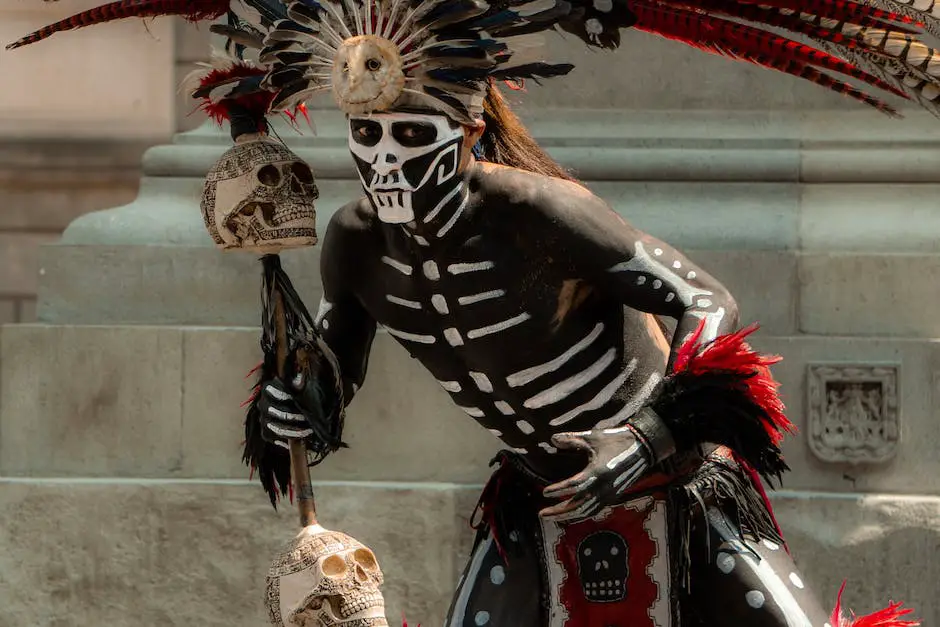
Exploring Materials and Techniques
Materials and Tools Needed for an Aztec Board Game
Your first step is to gather all the necessary materials and tools. Start with selecting the material for the game board. The Aztecs made their game boards from stone or wood, so the best representation would be a smooth, flat piece of wood. However, cardboard or thick paper could be a viable alternative for simplicity and availability.
Next, the game pieces can be made from clay, wood, or even small pebbles. In ancient times, Aztec game pieces were often intricately carved, shaped, and decorated, so get creative and stylize the game pieces to represent Aztec culture.
For detailing and decorating, you’ll need tools like carving knives or sculpting tools if you are using wood or clay, and paintbrushes or markers for drawing on the board or pieces.
Exploring the Artwork Techniques of the Aztec Period
Decorating your board game with authentic Aztec designs helps emphasize its cultural roots. Aztec artwork is characterized by strong geometric patterns, stylized representations of animals, deities, and human figures.
Aztec artisans also made intricate carvings, which we know today as bas-relief. To replicate this, you can carve or etch patterns directly into your game board if you are using wood. But be careful, as this requires skill and patience.
Alternatively, you can achieve similar effects using paint. Start with basic shapes like circles, squares, or triangles, and then add more detail to make it look more Aztec. Aztec colors often included vibrant hues such as turquoise, red, black, and yellow.
Recreating Aztec Gaming Elements
The Aztec board games were close to what we would recognize today as dice games. The game we commonly refer to as ‘Patolli,’ was played on a cross-shaped board and used beans or stones for dice.
To create your own version of Patolli, you’ll need a cross-shaped board and six game pieces. The board should be divided into 52 squares, representing the 52-year cycle of the Aztec calendar.
Create your own dice by marking one side of three small beans or stones; when tossed, the way they land will dictate movement on the board.
Remember to read about the rules and gameplay of Patolli to fully understand and enjoy these historical Aztec games.
In conclusion, making DIY Aztec board games combines knowledge of history, art, and craft. It’s a fun and educational process that results in a unique item for your game nights!
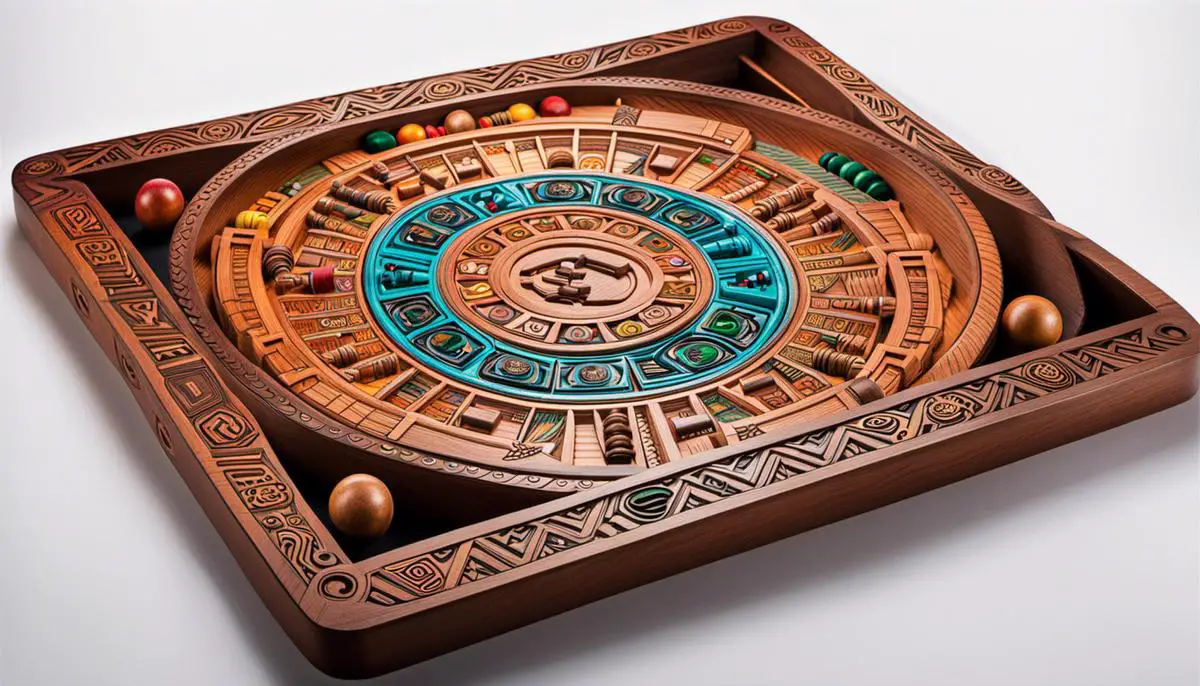
Game Design Principles
Game Design Principles Explained
Game design principles are the backbone of creating any enjoyable and immersive gaming experience. There are four key elements that you need to understand when creating a DIY Aztec board game: Game mechanics, rules development, game aesthetics, and gaming psychology.
Understanding Game Mechanics
Game mechanics are the beating heart of your board game. This includes the actions, behaviors and control mechanisms afforded to the players within your game’s framework. The game mechanics should promote engagement and interaction between players. For example, in an Aztec-themed game, your mechanics might involve a monetary system using cocoa beans, or a system of turn-based strategies where players compete to build the greatest Aztec civilization.
Rules Development
Rules are what make a game playable and understandable. They provide a clear structure and set goals for players. Rules should be easy to understand but complex enough to provide a challenge. Additionally, your rules will also determine the game’s duration, the number of players, and the methods of winning or losing. For instance, you could create a rule where a player’s civilization needs to achieve a certain level of wealth or advancement before they can be considered the winner.
Game Aesthetics
The aesthetics of your game cover its visual, auditory, and tactile attributes, adding another layer of engagement for the player. It can include the game board design, the game pieces, and any sound effects or music. While aesthetics shouldn’t disrupt the game mechanics or rules, they should still reflect the essence of the game and enhance the gaming experience. For an Aztec-themed game, you might use bright, warm colors, Aztec symbols, and pieces shaped like Aztec people or monuments.
The Psychology of Gaming
The psychology of gaming might be the least tangible component of game design, but it is also one of the most crucial. This principle involves designing your game in a way that taps into the player’s motivations, emotions, and cognitive abilities. Accordingly, your game should promote a sense of competitiveness, a feeling of accomplishment, and an element of surprise or unpredictability to keep players engaged. You could use rewards, variable outcomes, and suspense to achieve these effects.
In conclusion, creating a captivating Aztec-themed board game involves a careful application of game design principles. These include a nuanced understanding of game mechanics, rules development, game aesthetics, and the psychology of gaming. By implementing these fundamental design principles, your DIY board game will not only be visually stunning but also enjoyable and engaging to play.
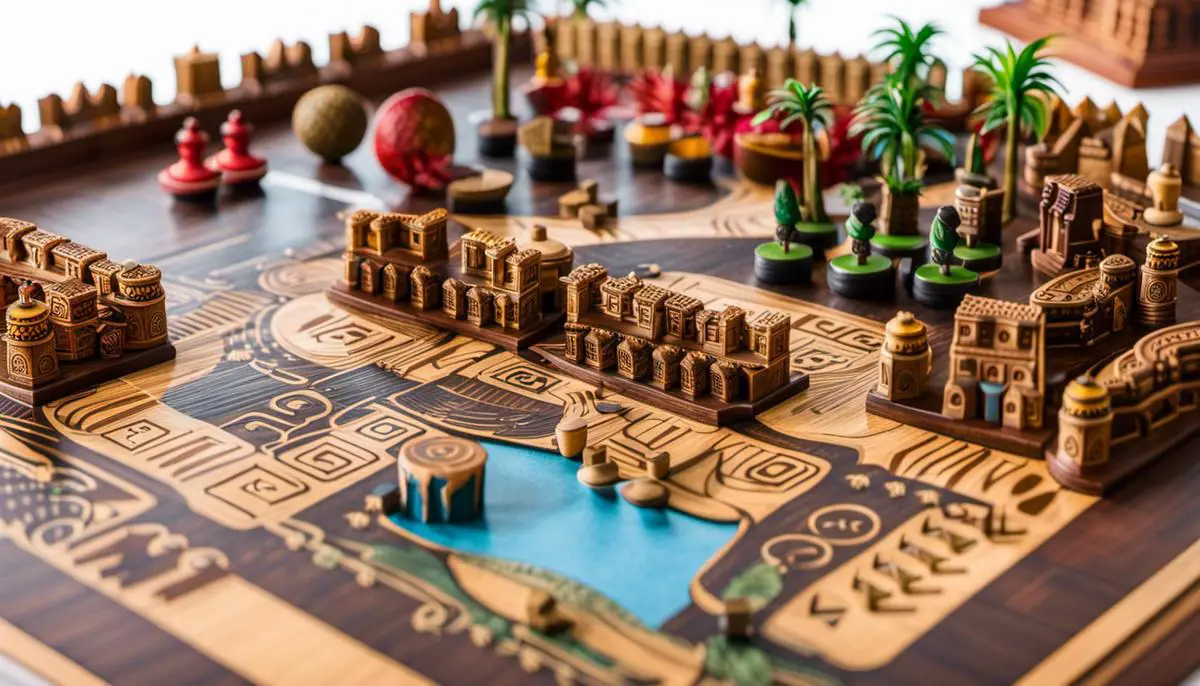
Building and Testing the Game
Step 1: Gather Essential Materials
Collect all the necessary materials before you commence. These would include cardboard for your game board, colored markers or paint, an X-acto knife or scissors, and an adhesive. For Aztec-style art and symbols, you may want to look at reference images online. You can also incorporate pieces of thin wood or stones, for the game pieces.
Step 2: Design the Game Board
Using a piece of cardboard as the base, outline the grid or path of your game board. Traditional Aztec board games often involved strategic movement along these lines, so consider this when drawing out your game board. Once you’ve penciled in your structure, you can begin filling it in with Aztec designs. Use bright colors and geometric shapes, along with iconic symbols such as the Aztec calendar, the feathered serpent Quetzalcoatl, or different god representations.
Step 3: Craft the Game Pieces
Depending on the rules of your game, you might need a varying number of pieces. These should be small and easy to move around the board. They can be as simple as colored rocks or as intricate as tiny clay figurines, as long as they have a distinct Aztec feel.
Step 4: Settle on Game Rules
Determine the rules of your game. Aztec games often revolved around warfare or religious themes, so perhaps your game pieces could be ‘warriors’ seeking to capture territory, or ‘priests’ attempting to achieve spiritual ends. Whatever the theme, make sure your rules are clear and straightforward.
Step 5: Testing and Adjustment
Once you’ve built your Aztec board game, it’s time to test play. Invite friends or family members to play it and give you feedback. It’s vital to pay attention to how the game is balanced – if it’s too easy or too hard to win, then adjustments may be needed. Maybe a rule should be clarified, or a game procedure needs tweaking. Use the feedback from your testers to refine the game’s final details.
Step 6: Refinement and Decoration
After you’ve tested and adjusted your game for balanced play, you can consider refining the game board and pieces. You could add further decorations to the board, perhaps some gold-look accents or detailed carving on the game pieces. This final step is an opportunity to enhance the beauty of your game board while maintaining the Aztec aesthetic.
Testing and refinement is a continuous process. You may find that you want to create new rules or add in new details as you continue to play your DIY Aztec board game. Enjoy this creative and engaging journey into the historic and fascinating world of Aztec board games.
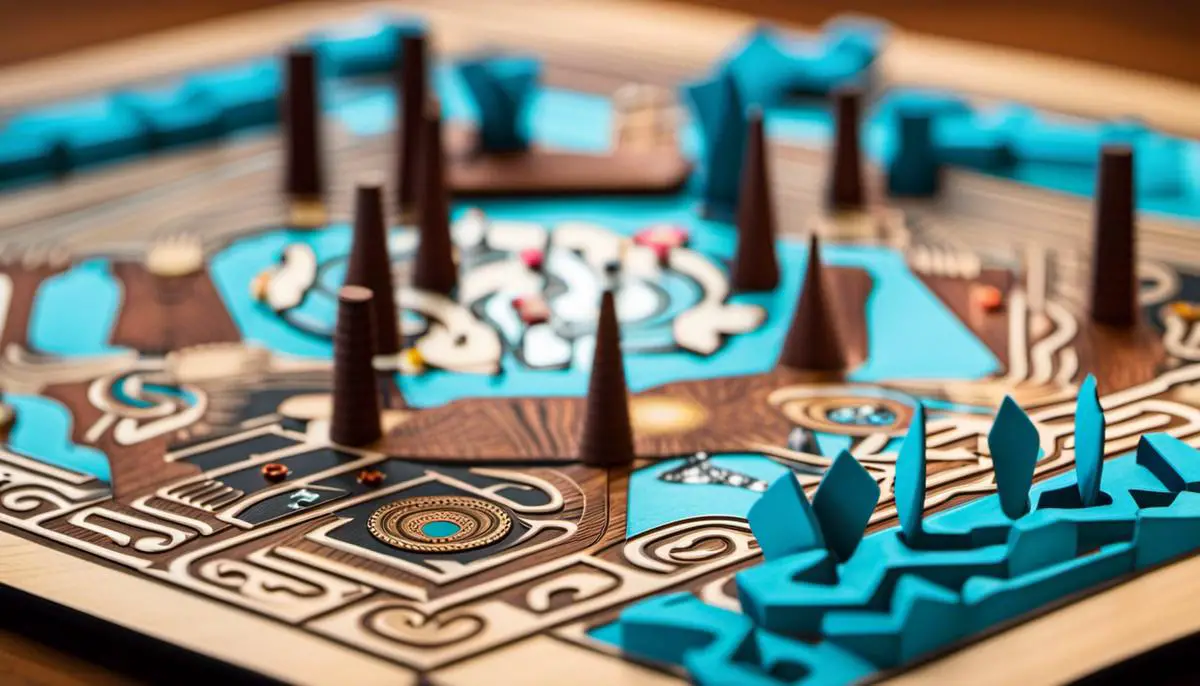
After meticulously crafting your Aztec board game, it’s time to revel in the fruits of your labor. Collaborating with friends or family members to test for playability and balance a game filled with Aztec symbolism and artistry is an exciting phase. The process wedges you closer to the ancient Aztec culture while allowing you to contribute your creativity by designing a game that is not only visually appealing but also engaging to play. The journey of making a DIY Aztec board game is inherently a transformative one, allowing you to explore the depths of history, culture, art, and game design all at once.
